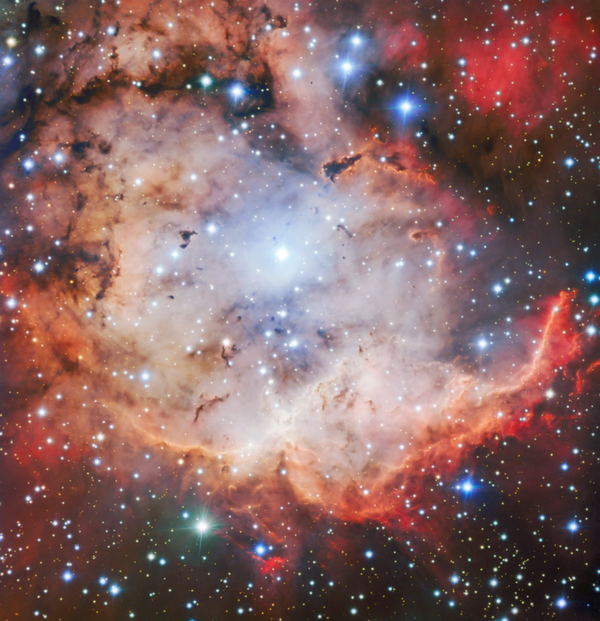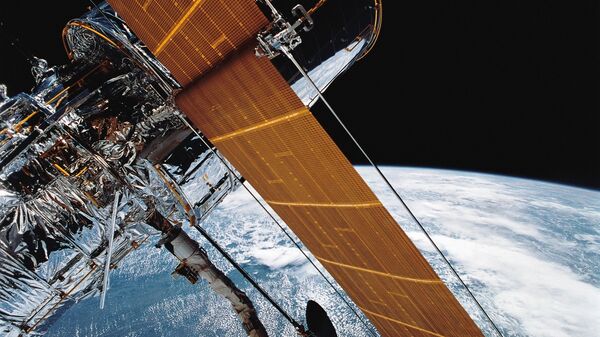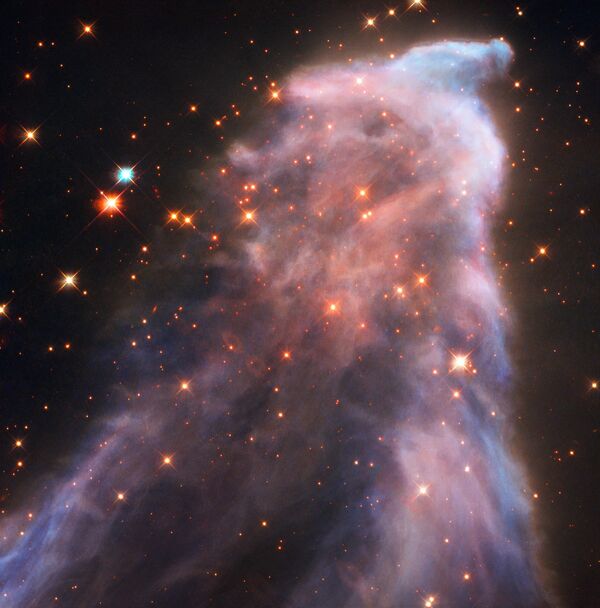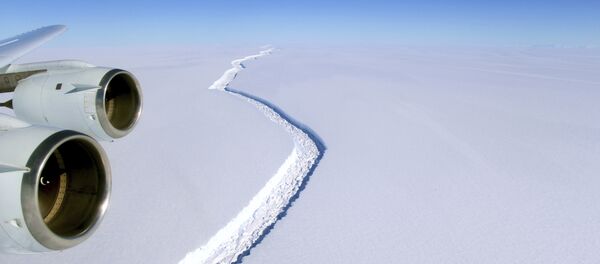Ghost Nebula, which is located nearly 550 light-years from Earth in the Cepheus constellation, lies near the cluster NGC 7023, a larger nebulous region that surrounds a powerful star known as Gamma Cassiopeiae.
IC 63's ghostly appearance is thanks to Gamma Cassiopeiae bombarding the nebula with ultraviolet radiation that ultimately causes it to release hydrogen-alpha radiation, turning portions of it red, according to ESA. The agency added that the powerful star is "19 times more massive and 65,000 times brighter" than the sun.
Captured by the Hubble Space Telescope in August of 2016, the image offers stargazers an up-close look at the nebula's "flowing veils of gas and dust," according to a statement released by US' National Aeronautics and Space Administration (NASA).
Although the nebula does put off a spooky vibe, NASA researchers stressed that it's far from anything seen in Halloween specials involving ghosts.
"The nebula's ethereal glow might remind people of apparitions such as those reported by paranormal investigators," the statement reads. "In reality, it's simply hydrogen that is being bombarded with ultraviolet radiation from the nearby, blue-giant star Gamma Cassiopeiae (not seen here), causing it to glow in red light."
"The blue color is from light reflected off of the nebula's dust," the announcement continued.
The image release came two days after officials at the European Southern Observatory (ESO) shared a picture of "The Pirate of the Southern Skies" last week on Wednesday.

The dazzling image is that of an active star-forming region known as NGC 2467, which is more ominously known as the Skull and Crossbones Nebula.
Snapped by FORS2, an instrument mounted on ESO's Very Large Telescope, researchers managed to capture the image during a day they described as "not suitable for gathering scientific data."
Rather than sitting idle, officials opted to collect images for ESO's Cosmic Gems Program, which is part of an initiative to produce content of "interesting, intriguing or visually attractive objects using ESO telescopes, for the purposes of education and public outreach."





